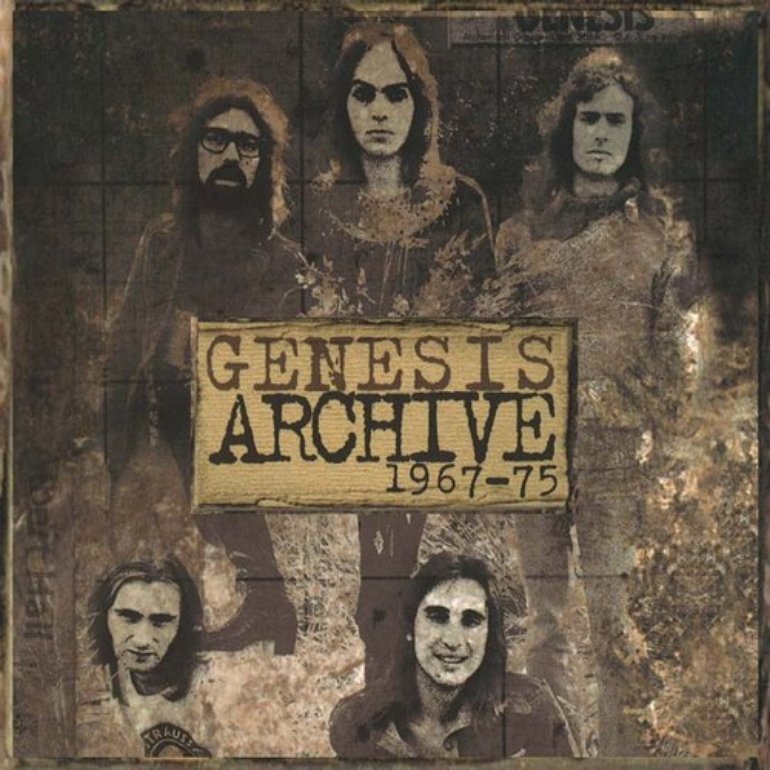On July 4, 1987, Genesis finished their gigantic Invisible Touch tour at Wembley Stadium. It was the fourth sold out night in a row at Wembley.
Invisible Touch
In 1986, Genesis released the album Invisible Touch. It became their most successful album, peaking at #1 in the U.K. and #3 in the U.S. It produced five hit singles: ‘Invisible Touch’, ‘Tonight Tonight Tonight’, ‘Land of Confusion’, ‘In Too Deep’ and ‘Throwing It All Away’. Songs like the title track, ‘Tonight, Tonight, Tonight’ and ‘Land Of Confusion’ with its famous spitting image video would dominate the radio and music TV stations and the international charts of 1986/1987. Genesis were everywhere and bigger than ever. So of course, the band went on a massive tour through North America, Australia, Japan and Europe before finishing in Britain with four sold-out nights at Wembley Stadium in front of 300,000 people.
Purchase Invisible Touch here on Amazon!*

The Invisible Touch tour
The tour began in the U.S. in September 1986 and included 112 dates and sold close to two million tickets. It ended in July 1987. In Australia and New Zealand, the five-man line-up was accompanied by a four-piece string section on ‘In Too Deep’ and ‘Your Own Special Way’. They had to invite the quartet because of local regulations that required them to employ local musicians.
At this time, the band was not only a hit-machine, but a working and brilliant live act. The Vari Lite light show was impressive as always. The band had much material to rely on, but chose mainly new songs from their hit album and the albums before.
The shows were always opened with ‘Mama’ (which sometimes lacked a bit of atmosphere in daylight) and ended with the ‘Turn It On Again’ hit medley that the band had established on the previous tour. The medley included ‘Everybody Needs Somebody to Love’, ‘Satisfaction’, ‘Twist and Shout’, ‘Pinball Wizard’, ‘All Day and All of the Night’ and ‘Karma Chameleon’.
Older songs in the set included ‘Los Endos’, ‘Home By The Sea’ (including it’s meanwhile standard ghost-story introduction) and another ‘In The Cage’ medley. When the tour began, they had played ‘In That Quiet Earth’ and the second half of the epic ‘Supper’s Ready’ after ‘In The Cage’. However, during the tour Phil had difficulties reaching the higher notes in ‘Supper’s Ready’, so by the middle of the tour they had gone back to the usual ending of ‘In That Quiet Earth’ and ‘Afterglow’.
New songs included ‘Domino’ (with another – soon to be famous – introduction by Phil), ‘Tonight, Tonight, Tonight’, ‘Throwing It All Away’, where the call-and-response singing developed throughout the tour, and ‘Invisible Touch’ itself.
Live at Wembley Stadium
‘Nearly 300,000 people at Wembley. OK, there might have been a few repeats in there, but I thought at the time, and I still think now, that moment was the peak of our career’1 – Tony Banks.
By the time Genesis got to Wembley, they had performed the set so often that it had become a true piece of fine art and musicianship. Interestingly, only two shows were scheduled at Wembley, but the demand for tickets was so high, that a third and then a record-breaking fourth night were added. Genesis ended in Guinness World Records until Michael Jackson sold out Wembley Stadiums on seven nights on his Bad World Tour one year later.
The Wembley shows were filmed and released as video and as DVD in 2003. Unfortunately the famous ‘In The Cage’ medley was left out of the release because on every night, the tapes had to be changed during that song.
Apart from that, the results and the performance are astonishing. The band truly ended the tour on a high note there. Looking back at the videos and listening to the songs and performances, we can say that Genesis were at their peak at this very point at Wembley Stadium. Afterwards, the fans had to wait four more years for a new Genesis record.
Title photo: Genesis Nancy 1987. Phil Collins, Tony Banks, Mike Rutherford, Daryl Stuermer, Chester Thompson. Genesis en concert à Nancy le 14 juin 1987 au stade Marcel-Picot de Nancy-Tomblaine Source: Wikimedia Commons, Fredamas / CC-BY-SA-2.5 (https://creativecommons.org/licenses/by/3.0).
Listen to songs recorded at Wembley in 1987 on “Genesis – BBC Broadcasts” – Get it here!*

Genesis Music on Amazon*
Purchase Live at Wembley here on Amazon!*

*= affiliate link
- in Banks, Tony; Collins, Phil; Gabriel, Peter; Hackett, Steve; Rutherford, Mike; Dodd, Philip, Genesis. Chapter & verse. (New York: Thomas Dunne Books/St. Martin’s Griffin, 2007), p. 287. ↩︎










